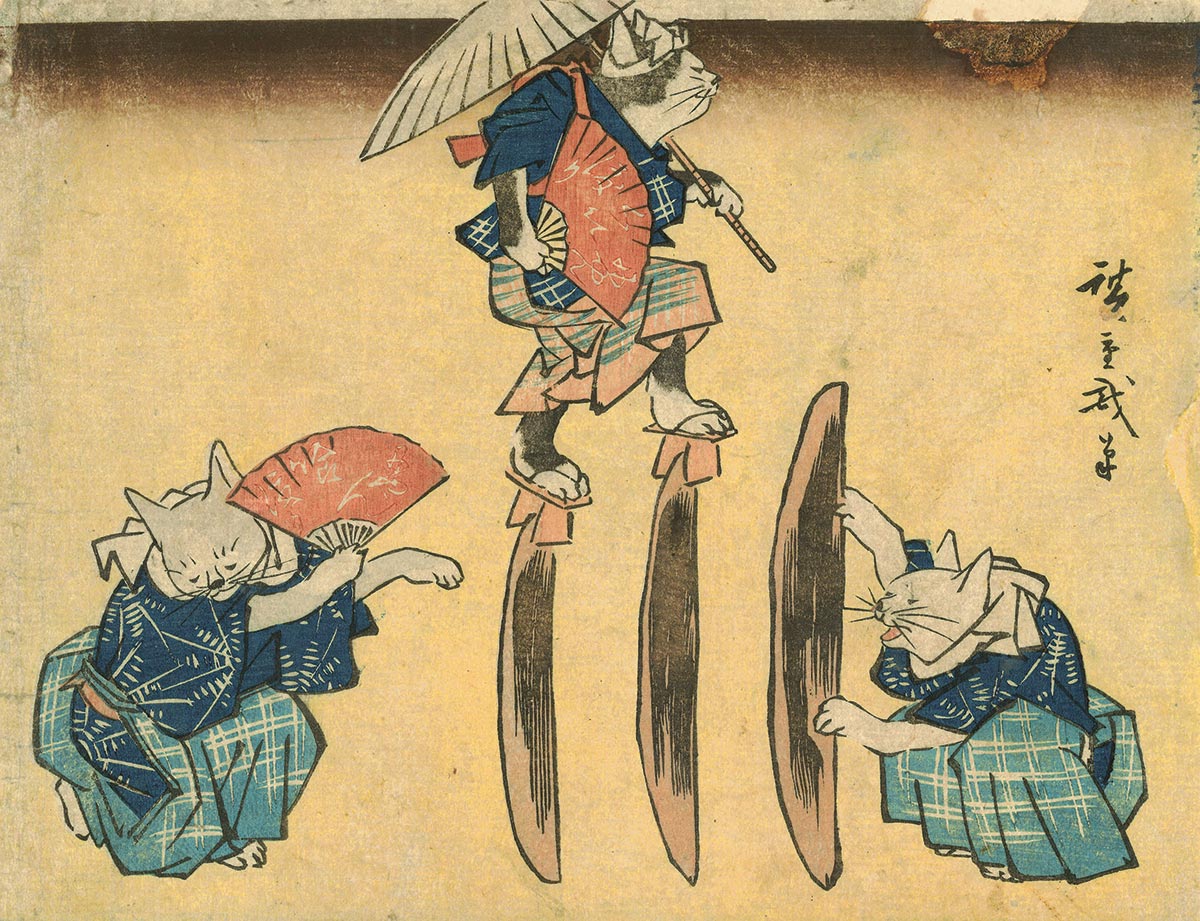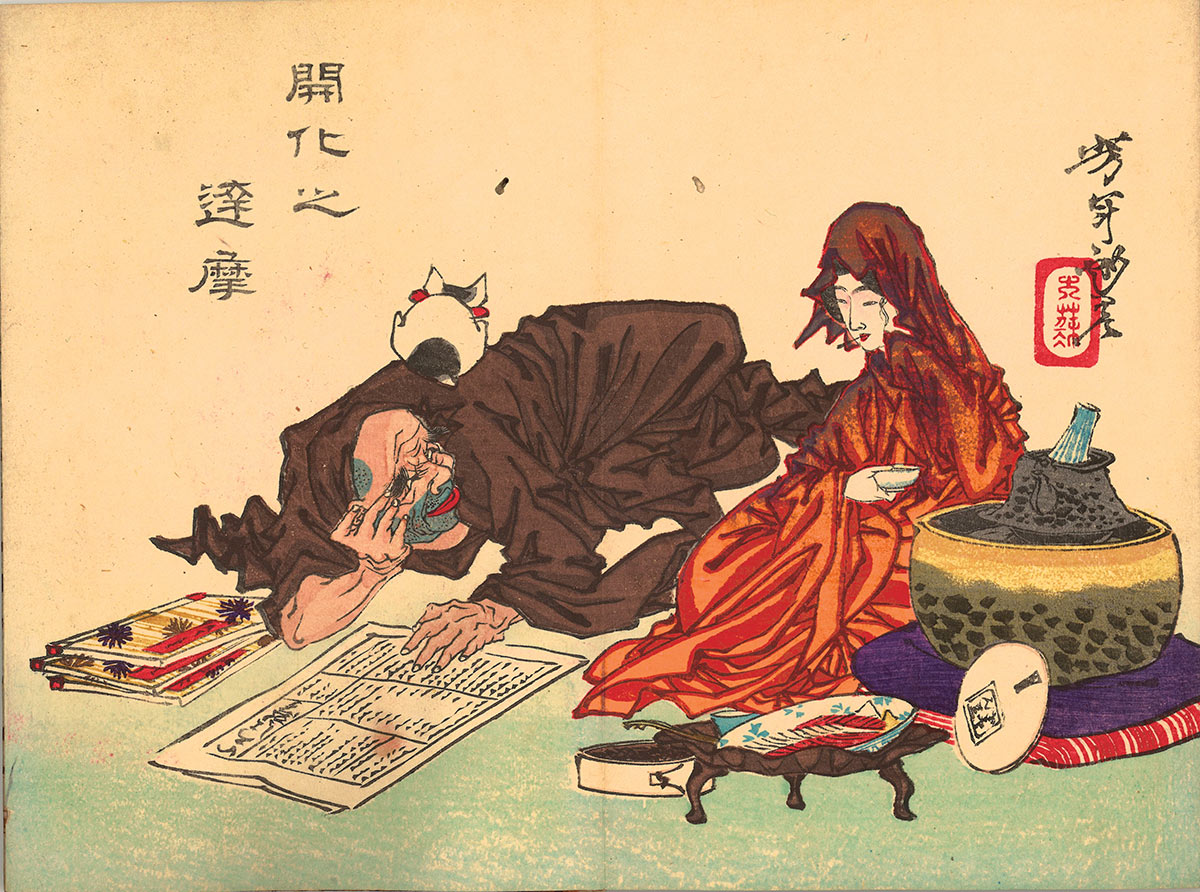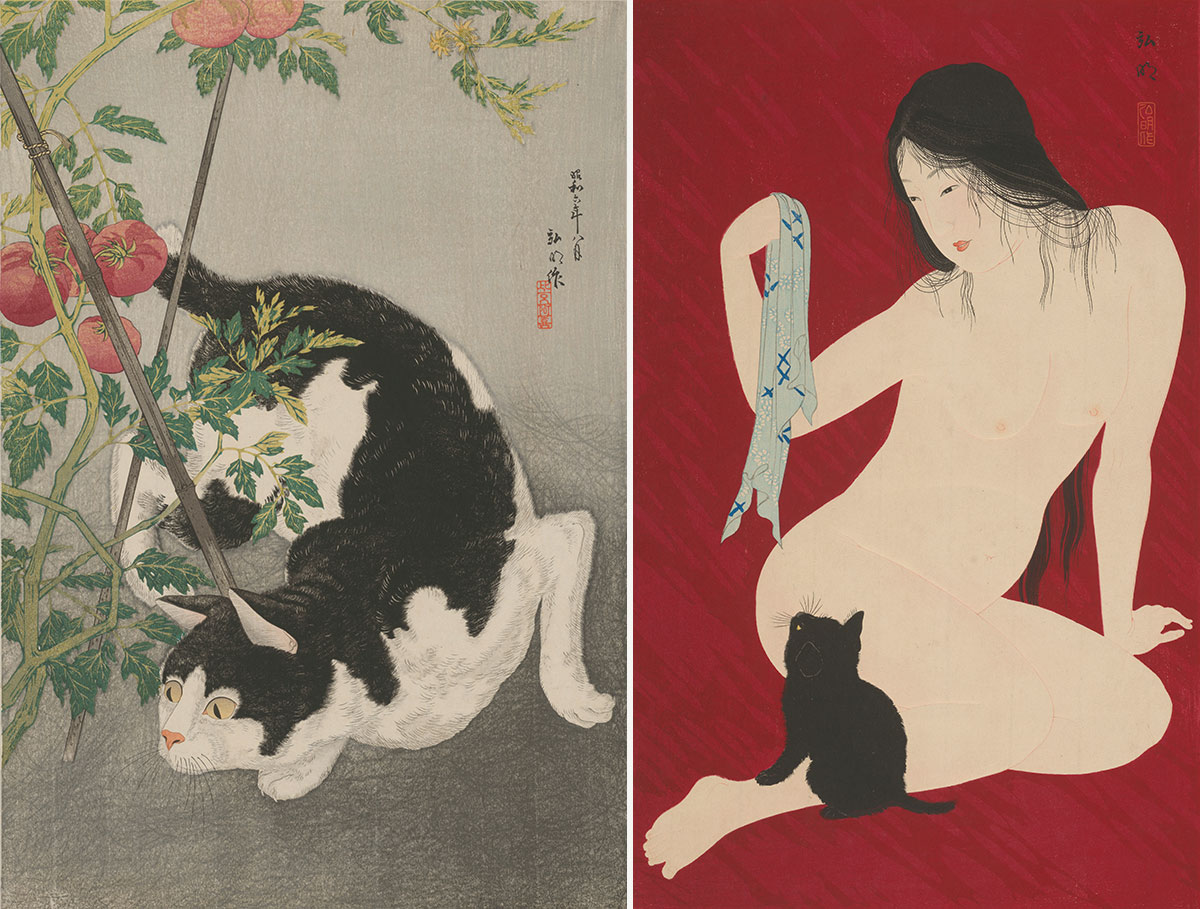Life of Cats at Japan Society Gallery
A new exhibition explores the recurring cat motif and how it’s transformed in Japanese artwork over the past few centuries


If you thought the cat craze was only as young as YouTube, the latest exhibition opening at Japan Society Gallery will demonstrate that long before they became memes and viral sensations, the four-legged feline had already been a muse for centuries. Centered on Japanese ukiyo-e woodblock prints from the Edo Period, as well as cat-themed paintings, sculptures and more selected from collections within the US, “Life of Cats: Selections from the Hiraki Ukiyo-e Collection” opens this Friday, 13 March, at Japan Society in New York.

In her research for the exhibition, Japan Society Gallery director and curator Miwako Tezuka was surprised to learn that cats were not native to Japan but in fact came from China when Buddhism was being introduced to Japan around the mid 6th century. Japanese Buddhist monks, merchants and others who visited China carried back Buddhist scriptures on ships—and as the paper attracted lots of vermin such as rats, cats were put on board the ships to protect the items and keep the infestation down.

“It became an exotic animal to Japanese people,” Tezuka tells CH. “In early times, during the 8th to 12th century, cats were very precious animals and very rare; only upper-class people like courtiers and aristocrats were able to have cats as their pets. Although cats were initially appreciated as guardians of important Buddhist scriptures, later on, people started to discover cats’ mischievous nature,” noting their tendency to run around, break items, steal food and more. As a result, folk tales began spreading about these mischievous cats eventually transforming into monsters.

“The one that is most famous is ‘nekomata,'” explains Tezuka. “People believed that when cats grow too old, they become like humans. They start to act and talk like people, and play tricks. They acquire magical powers, and they’re one of the most famous villains in folk tales in Japan.” Kabuki theater especially loved these legendary stories and transformed them into theatrical performances; the nekomata tale was made into a horror story. One of the five thematic sections in “Life of Cats” focuses on the latter. The section is aptly titled “Cats versus People.” The remaining four categories are “Cats and People,” “Cats as People,” “Cats Transformed” and “Cats and Play.”

“Nowadays, the Japanese are crazy about cats—and that has some historical background,” continues Tezuka. “It’s a longtime relationship with this particular animal throughout history that created the basis for Japanese love for cats in today’s world. It’s really not a trend!”
“Life of Cats: Selections from the Hiraki Ukiyo-e Collection” opens Friday, 13 March 2015 at Japan Society Gallery, 333 East 47th Street, New York, NY 10017, just a few blocks north of the United Nations headquarters. Halfway through the show’s multiple-month long run, around 50 items will be replaced with new works. Rotation One will be on view from 13 March until 26 April; Rotation Two will be on view from 29 April until 7 June 2015.
Images courtesy of Japan Society Gallery











